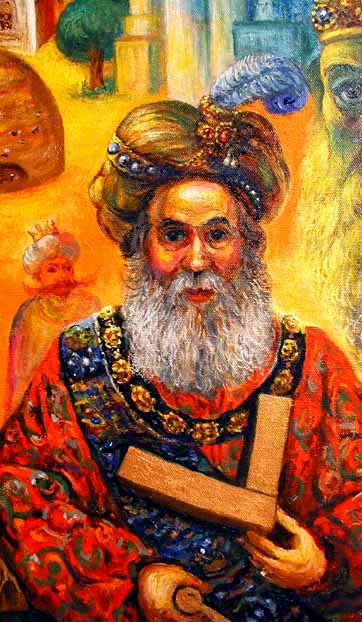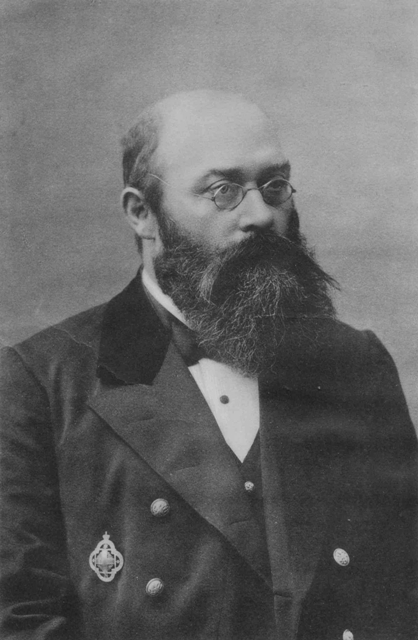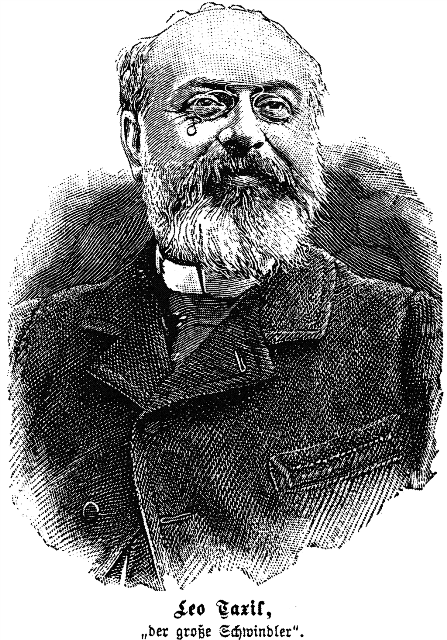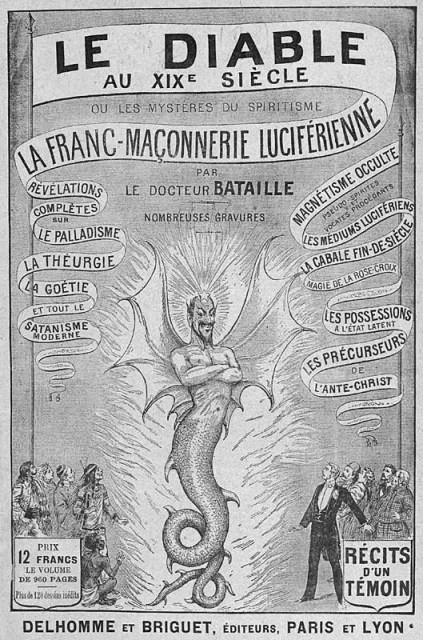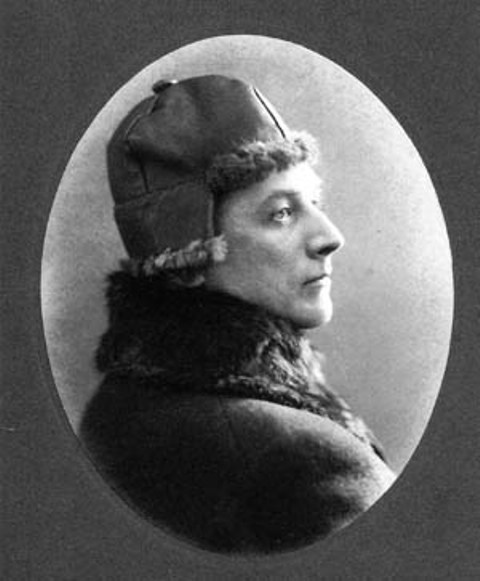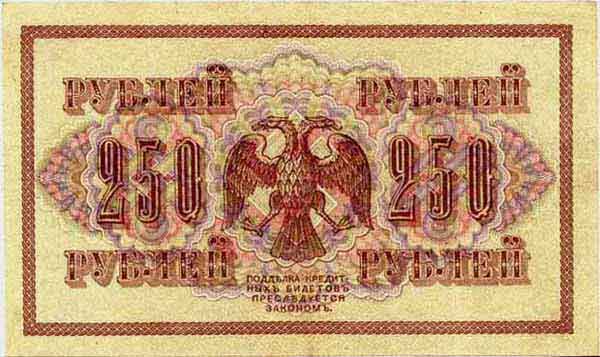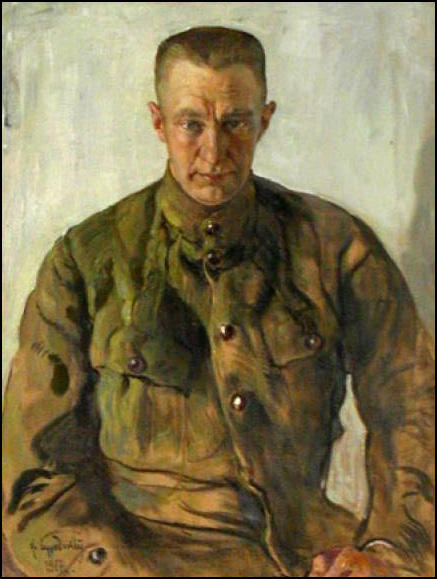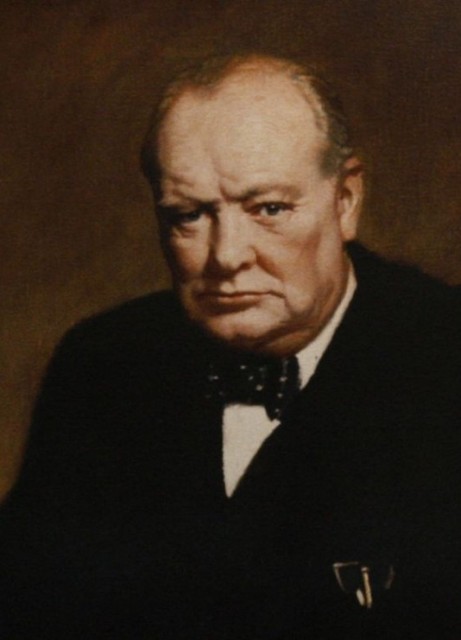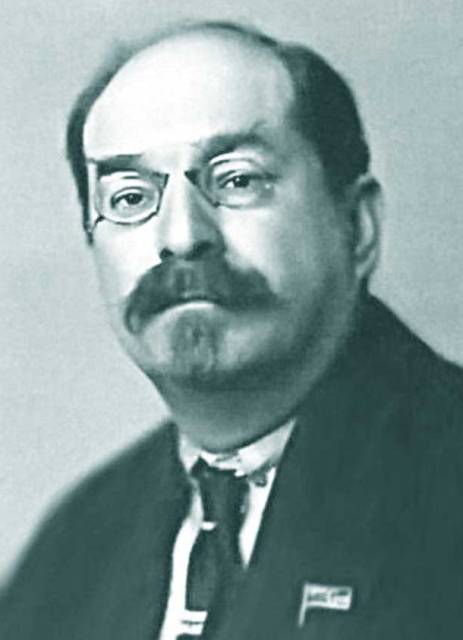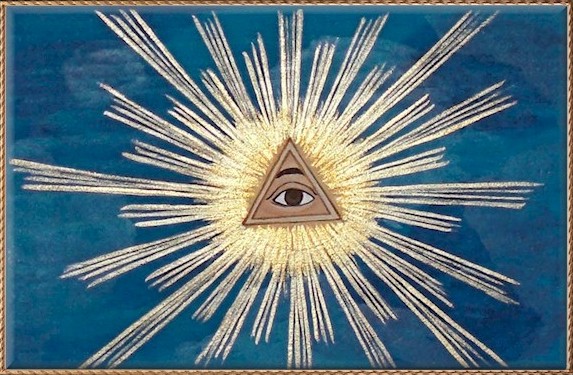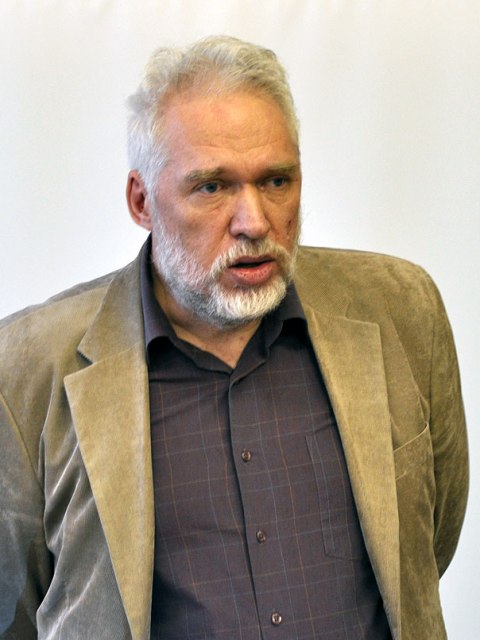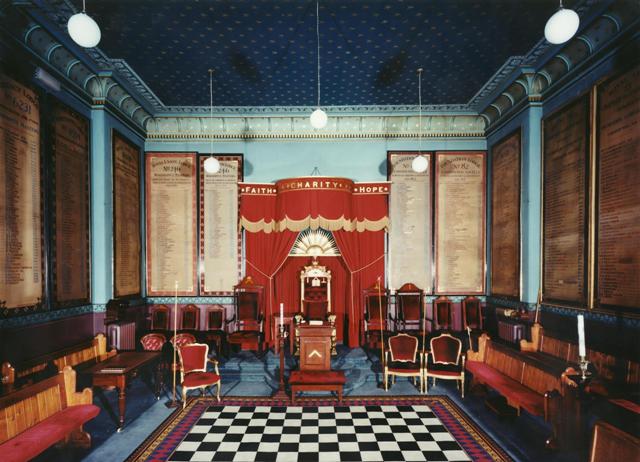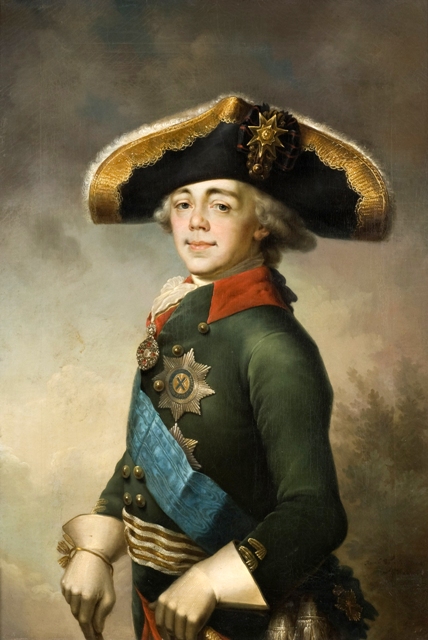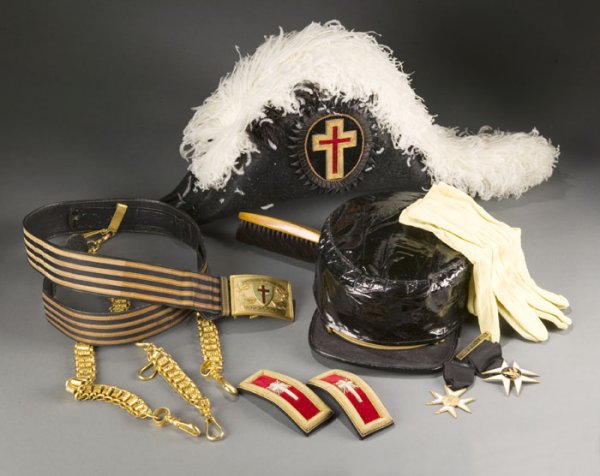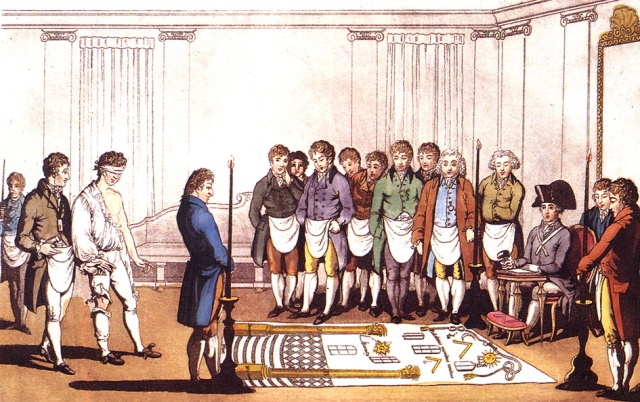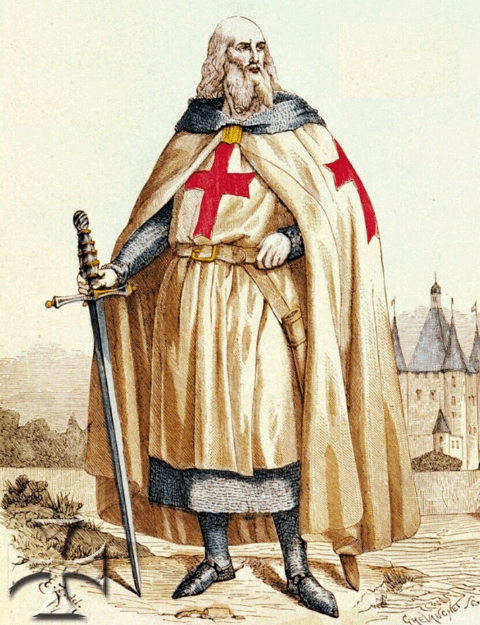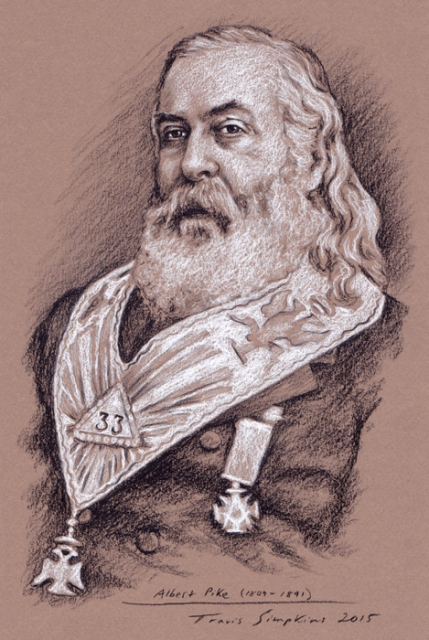Freemasonry in The Master and Margarita
English > Context > Historical and political > Freemasonry
Freemasonry
Attentive readers will see many masonic symbols described in The Master and Margarita. Freemasonry is an internationally widespread, but regionally structured, brotherhood of people seeking «spiritual and moral upliftment», «mutual appreciation» and «mutual aid». The local associations are called lodges, members call themselves lodge brothers.
The word Freemason comes from the French word frère-maçon, meaning brother-builder. The association is a plighted troth with an initiation rite in which members swear an oath of secrecy regarding to what is going on with Freemasonry and other Masons. The association's rituals are derived from the mystery plays of ancient Egypt and ancient Greece.
The most famous symbols of Freemasonry known by the general public are the compass and the square. Its origin lies in the story of Hiram Abiff, who was considered at the time of King Solomon (972BC-932BC) as the most intelligent and most skillful architect and builder that has ever existed. Under his leadership, some 183 600 artisans, foremen and forced laborers have been used to build the Temple of Solomon. Hiram Abiff would have been an outstanding builder because he knew the secrets of mastery, as well as some secret words which would have helped him in building the site. One day, three students wanted to force him to tell them the secrets, and when the Grand Master refused, he was killed with his compass, his square and a hammer.
The initiation of a member does not happen in one single go, but in separate steps or degrees in a continuous manner. At every step, a member is making progress in his initiation. At every new degree, a new part of knowledge or insight which did not previously exist, is acquired. All lodges know the three basic degrees of Entered Apprentice, Fellow Craft and Master Mason. These three degrees, also known as the degrees of Blue Masonry, must be followed systematically by any Mason. In addition to the three degrees of Blue Masonry, many lodges are also working with higher degrees, which begin where the Blue Masonry stops. In the Ancient and Accepted Scottish Rite, for example, 30 more degrees follow, the 4th to 18th degree being known as the Red Masonry, the 19th to 30th degree as the Black Masonry and the 31th to 33th grade as the White Masonry.
Afanasy Ivanovich Bulgakov
In 1903, Afanasy Ivanovich Bulgakov (1859-1907), theologian and church historian, and father of Mikhail Afanasievich, had written an article about Modern Freemasonry in its Relationship with the Church and the State, which was published in The Acts of the Theological Academy in Kyiv. At a time when Freemasonry was labelled from different angles as an association of devil worshipers, or when was suggested that the association would be an instrument controlled by Jews, Bulgakov senior examined how the Freemasons, with their officially professed religious indifference, were related to the different religions. He also described the degrees of Freemasonry and the Masonic initiation rites. He concluded that «the historical value of Freemasonry to this day remains essentially unknown because they can only be defined approximately. Just as the Order of the Jesuits, for example, the knowledge is only available to a limited number of fully dedicated members».
Afanasy Bulgakov also wrote about the widespread myths about freemasonry. He described, for instance, the controversy related to the French writer and journalist Marie Joseph Gabriel Antoine Jogand-Pagès (1854-1907), who started using the pseudonym Léo Taxil in 1875.
At the beginning, Taxil was extremely anticlerical. This is one of the reasons why his writings were eagerly published in the Soviet Union. In 1886, however, he announced his conversion to his former faith and went on a pilgrimage to Rome, where Pope Leo XIII (1810-1903) granted him absolution. Then he started a campaign against Freemasonry. He had been initiated into the lodge Le temple des amis de l'honneur français but had been disbarred for forgery. In 1895, he published the book Le Diable au XIXème siècle or The Devil in the 19th Century under the pseudonym of Docteur Bataille. In this book, the Masons were accused of devil worship and global conspiracies. Both real and perceived Masons were presented with supposedly revealing testimonies. In 1897, however, during a conference in the main hall of the Société de Géographie in Paris, Taxil had to confess that he had invented everything. His confession was listened to with outrage. When Taxil wanted to leave the building, the police had to escort him through the crowd to a nearby cafe. But despite Taxil's confession, anti-Masonic texts that rely on this book continue to be pubished, and it is still one of the most frequently used sources for accusations against Freemasonry.
The article written by Afanasy Bulgakov has got some anti-Semitic overtones. According to Boris Vadimovich Sokolov (°1957), the author of the Bulgakov Encyclopedia, this would explain why at certain times anti-Semitic reflexes can be seen in the work of Mikhail Bulgakov.
Freemasonry in the Soviet Union
In 1926, two years before Bulgakov started writing The Master and Margarita, several Masons got arrested in the Soviet Union, mostly in Leningrad, where six Lodges were found to exist. One of those arrested, the lawyer Boris Viktorovich Kirichenko (1883-1941?), who lived under the pseudonym Boris Viktorovich Astromov, and who was also a cavalry officer and a hypnotist, claimed that he was already 2,000 years old, and that he was a follower of Immanuel Kant (1724-1804). Astromov was convicted because he had helped an «international bourgeois conspiracy against the Soviet Union». He was sentenced to a concentration camp for five years, later changed into a period of three years. In December 1926, he was pardoned and he was exiled to Siberia. In 1940 he was again arrested by the NKVD. Afterwards, no more was heard about him.
Attentive readers will already have noted a number of links - in The Master and Margarita, Woland is described by the authorities as a hypnotist, he says thet he's been with Pilate 2,000 years ago, and Bezdomny says that Kant had to be sent to Solovki for three years.
Astromov, who has played several roles under the pseudonym Boris Watson in films like «Чудотворец» (1922) or The Miracle Worker, «Скорбь бесконечная» (1922) or The Endless Suffering, «Красные партизаны» (1924) or The Red Partisans, wrote a letter to Stalin from prison, in which he delicately pointed out that the Soviet Union had taken over some of the symbols of the Freemasons. He was referring to the pentagram or five-pointed star that former party ideologue Lev (Leiba) Davidovich Bronstein (1879-1940), better known as Lev Trotsky had introduced at the Red Army when he was the People's Commissar for Military and Maritime Affairs, or the hammer and the sickle on the flag of the Soviet Union.
Incidentally, yet another symbol of Freemasonry was prominent in the lives of the Soviet citizens at the time. The banknotes of 250 rubles and 1,000 rubles in 1917 had a swastika as a watermark. The swastika was a sign that, even before the runes, occurred in many artifacts in Europe and India, and it mainly symbolized happiness and well-being, at least until the Nazis started using it, giving it a very different meaning. In Freemasonry, the swastika was considered as an ancient predecessor of the letter G. The G stands for God, for the Greek word γνώση [gnosi] or knowledge, or the spiritual light of the Great Geometer. Some also refer to the Greek letter gamma which also has the shape of a square. On the 250 rubles bill, a double eagle is printed over the swastika. This symbolizes the Knights of Kadosh, the 30th degree in the Ancient and Accepted Scottish Rite.
The bank notes with the swastika have been introduced under Aleksandr Fyodorovich Kerensky (1881-1970), when he was the second prime minister of the Russian Provisional Government after the dethronement of the tsar. Kerensky was a member of the Masonic Lodge Верховный Совет ДПШУ России [Verkhovni Soviet DPSHU Rossii] or the Supreme Council of the Ancient and Accepted Scottish Rite for the Russians. Two other masonics, Vladimir Lenin (1870-1924) and Lev Trotsky, however, found that this symbol on the banknotes was too explicit and feared that the Russian people would see the revolution as a conspiracy of Freemasons and Jews - what some indeed did and still do. So they removed the swastika and replaced it by the famous hammer and sickle. The Supreme Council of the Ancient and Accepted Scottish Rite for the Russians still exists, and has got its own Facebook page.
Click here to visit the Facebook page of the Council
Conspiracy theories
Many theories have been published about the role the Masonry allegedly played in the French Revolution of 1789-1799, or in the spreading of the communist ideology and the Russian Revolution in 1917. However, since secrecy is one of the characteristics of the Lodges, it is difficult to confirm this. Anyway, some pioneers of the Soviet Union have been active members of one or more Masonic Lodges, or had close links with it.
The German philosopher Karl Marx (1818-1883), who has formulated the ideological foundation for the Soviet Union with his writings, was called by his Jewish name Chaim Mordechai Hirschel. His father, Hirschel Mordechai (1777-1838), was a member of the Loge L'Ètoile anséatique in Osnabruck in 1813.
Vladimir Ilyich Lenin (1870-1924) was a Lodge brother of the 31th degree with the title of Grand Inspector Inquisitor Commander. He was a member of the French lodge Art et Travail. In 1914, he joined Les Neuf Sœurs or The Nine Sisters and the Union de Belleville, two Lodges belonging to the Grand Orient de France. This information was confirmed in particular by the British author and politician Winston Churchill (1874-1965), who was a member of the British Studholme Lodge since 1901.
Lev Trotsky had already thoroughly studied the Freemasonry in 1898, when he was in jail in Odesa because of his labour union activities. Like Lenin, he was a member of the French lodge Art et Travail. In 1916, he was educated in revolutionary techniques in the French lodge Les droits de l'homme. In January 1917, he also became a member of the powerful Jewish Lodge בני ברית [B'nai B'rith], which financed his return to Russia in the spring of that year, and the Memphis-Mizraim Lodge, which was led by the Italian nationalist Giuseppe Garibaldi (1807-1882). Finally, he was also a member of the Shriner Lodge, an order based in Florida which only accepts members from the 32th grade. In 1919, Trotsky reached the 33th and highest level on the occasion of a reception of Lodge brothers from abroad in Moscow.
From the archives of thesecret service KGB was also revealed that the first People's Commissar for Enlightment of the Soviet Union, Anatoly Vasilyevich Lunacharsky (1875-1933), was a member of the Grand Orient de France. In 1918, the British journalist Emile Victor Marsden (1866-1920) had written the pamphlet Jews in Russia, in which he argued that the Russian Revolution was a Jewish conspiracy. He had revealed that Lunacharsky was a Jew, and that was his Hebrew name was Bailich Mandelstam.
Freemasonry in The Master and Margarita
On Patriarch's Ponds
On the lid of the cigarette case which Woland shows to Ivan on Patriarch's Ponds, «a diamond triangle flashed white and blue fire». Blue is the highest colour of Freemasonry. It symbolizes perfection, truth and immortality. A triangle with the so-called Eye of Providence is present in all temples of Masonic Lodges on the wall opposite to the entrance, symbolizing the East.
According to the Russian Bulgakov expert Boris Vadimovich Sokolov (°1957), author of the Bulgakov Encyclopedia, the name Массолит [Massolit] could be an abbreviation of the term Масонские литературы [Masonskie literaturi] or Masonic writers. Sokolov argues his thesis by referring to the article by Afanasy Ivanovich Bulgakov (1859-1907), who had written that the Masons wanted to introduce a new faith. A false faith, according to him, because their only aspiration would have been to increase the personal wealth of their members. However, this seems somewhat farfetched to me. If this were true, it should have been Масолит [Masolit], with only one «s», which it isn't. Massolit is more than likely an abbreviation of Мастера Социалистической литературы [Mastera Sotsialisticheskoy literatura] or Masters of socialist literature.
Woland's apartment
The aforementioned arrests in the apartment of the Freemasons in Leningrad were carried out by the OGPU, the forerunner of the secret police NKVD. In their documents, the following description can be read: «The interior of the Masonic Lodge would be an asset to any given museum. We saw old portraits of the great Freemasons who belong in the ranks of the devotees of the genius. We saw secret 300 years old lamps, astral knots, the true rings of Cagliostro, Indian resins and Japanese incense, the bones keys of the Jesuits, Tangar sculptures, tapestries embroidered in blue gold, and even the original oath of allegiance to the Maltese knights, signed by Paul I.»
In an earlier version of The Master and Margarita, similar items filled the apartment on Sadovaya: lots of rugs, a golden chalice on a pedestal for the holy gifts, the Catholic black cassock of Woland, made of gold brocade with inverted crosses, and a cat with turquoise eyes sitting on a couch. And when Sokov, the buffet chief of the Variety Theatre, was leaving the apartment, he saw a temple where, instead of an icon, «a picture with the sacred content» was placed.
The Paul I, mentioned in the OGPU report, was Tsar Paul I of Russia (1754-1801). When the Sovereign Military Hospitaller Order of Saint John of Jerusalem of Rhodes and of Malta, better known as the Maltese Knights were ousted from Malta as a result of the Napoleonic wars in 1799, the seat of the Order was moved to Saint Petersburg, where Tsar Paul I was willing to act as a guardian and master of the order, despite protests from the Holy See. Like all other Orders, the Order of Malta was abolished by the Soviets in 1918.
The interrogation of Sokov in the apartment of Woland also reminds us of the test undergone by a Mason before he is being initiated as a Knight Kadosh or Knight of the of the White and Black Eagle, the 30th degree in the Ancient and Accepted Scottish Rite. All candidates for this degree are, among other things, judged on their attitude towards the Seven deadly sins: hubristic pride, greed, lust, malicious envy, gluttony, wrath, and sloth. Sokov, however, does not drink wine and does not seem to be interested in women. He does show signs of greed, though, and he became angry when Woland asked him if he was going to die. He thus failed the test and would not see the light.
When the buffet master is leaving the apartment, he notices that he is wearing a velvet beret with a dishevelled cock's feather. That is significantly inferior to the «broad-brimmed black felt hat with a plume of ostrich feathers on the left» which, according to the rules, the Knights of Kadosh should wear during the masonic rituals.
The transformation of Ivan Bezdomny
At the beginning of The Master and Margarita, the young poet Ivan Bezdomny is an ignoramus. When he is chasing Woland and his retinue, he loses his clothes at the Moscow River. The clothes he puts on are quite different from «the cowboy shirt, wrinkled white trousers and black sneakers" that he was wearing at the Patriarch's Ponds. It could refer to the initiation ritual in the first degree of Freemasonry, where the novice is introduced in shabby clothes. Like Bezdomny, the novice usually wears a half open whitish shirt. Furthermore, the candidate is blindfolded. In the third version of The Master and Margarita from 1933, Ivan was temporarily blind when he was taken to the clinic.
When Bezdomny is brought into the hospital of doctor Stravinsky, he was transferred through a corridor lit by blue night-lights. Again, we see a reference to Freemasonry. Before the initiation ritual, the candidate is ushered in the «chamber of reflection», a small darkened room adjoining the Lodge room, usually in the basement of the temple building.
Before a candidate is allowed to be initiated as an apprentice, he is subjected to a thorough examination, similar to the one Ivan goes through, when he is asked questions «about Uncle Fyodor, who had done some hard drinking in Vologda». At that interview, the candidate will not see any of the Masons, except for the questioners. Only later he will meet the Grand Master. In the novel, the questioning of Ivan is done «by three persons - two women and a man - all in white». Only after they have asked all their questions, he will meet doctor Stravinsky in person.
Later, in Chapter 11 of the novel, Ivan is undergoing a transformation. He becomes wiser and finally, at the end of the novel, he will even be a professor at the Institute of History and Philosophy, where he will no longer be called Ivan Bezdomny, but Professor Ivan Nikolaevich Ponyrev. And the master will tell him Masonic way: «I've seen everything, I know everything... Farewell, disciple».
Woland's Ball
The Russian Bulgakov expert Boris Vadimovich Sokolov (°1957), author of the Bulgakov Encyclopedia, sees a number of references to the rites of Freemasonry in Bulgakov's description of Woland's ball.
The incoming guests are greeting Margarita by kissing her knee. Some see this as a reference to Freemasonry, since the candidates should bare their right knees when being initiated as apprentices. And indeed, the guests at the ball are kissing Margarita's right knee.
After Margarita has welcomed the guests at the ball, she meets Woland. He was wearing worn-out bedroom slippers. An apprentice who is initiated into the first degree of Freemasonry, must replace his right shoe by a slipper. Furthermore, the male guests at the ball are dressed in tailcoats and patent leather shoes. That is the prescribed clothing for the Lodge brothers who are present at the initiation. Earlier in the novel, in Chapter 18, Hella already had told Baron Meigel that this would be the dress code for the men at the ball: «A tailcoat or a black suit».
The scene in which Woland turns Berlioz' head into a skull, could have been inspired by one of the allegations of Docteur Bataille, alias Léo Taxil, in the abovementioned Le Diable au XIXème siècle, about which the father of Bulgakov wrote in 1903. In this controversial book, Léo Taxil had argued that Hyman Isaac Long (?-?), one of the founders of the Ancient and Accepted Scottish Rite in Charleston, South Carolina, would have had in his possession the skull of Jacques Bourguignon de Molay (1243-1314), the last Grand Master of the Knights Templar. In 1801, Long would have placed the skull in the meeting room of the Lodge in Charleston. Ever since then, every year on March 11, the skull would start talking and spitting fire.
At the end of the ball, when the skull of Berlioz was filled with the blood of Baron Meigel, Woland turned the skull to his lips, and a metamorphosis took place. The patched shirt and worn slippers Woland which first wore were gone. Now he was in some sort of black chlamys with a steel sword on his hip. A chlamys was an ancient Greek type of rather short cloak, coming from Macedonia or Thessaly. The black chlamys and the sword correspond to the gear of a Knight Kadosh or a Knight of the white and the black eagle, the 30th degree in the Ancient and Accepted Scottish Rite.
Woland touched the skull to his lips, but then he offered the cup to Margarita and ordered her to drink. That refers to the sealing of the brotherhood in Freemasonry by the mixing of the blood during the initiation to the degree of Entered Apprentice. The mixture is symbolically represented by a cup of red wine from which the venerable master and the candidate drink together.
Also in the ritual for the degree of Knight of the East and West, the 17th degree in the Ancient and Accepted Scottish Rite, the blood plays an important role. The Faithful Brother Master of Ceremonies leads the candidate to a basin where a lancet and some red wine are kept ready. He approaches the candidate, let some drops of wine fall on his arm while pretending leeching him. When the «blood» flows, it is collected on a cloth and shown to the candidate with the words: «One should never be afraid to shed his blood to set eyes on wondrous things».
Manuscripts Don't Burn
The scene in which Woland returns the burnt manuscript of his novel to the master could also have been inspired by Le Diable au XIXème siècle. Léo Taxil claimed that Albert Pike (1809-1891), Grand Master of the Ancient and Accepted Scottish Rite in Charleston and successor of Hyman Isaac Long, received his instructions directly from the devil. According to Taxil, Pike and one of his friends would have prayed to Lucifer when he was looking for inspiration to rewrite the charter of the Lodge. This charter would be published later under the title Morals and Dogma of the Ancient and Accepted Scottish Rite of Freemasonry.
After his prayer to Lucifer, Pike would have found a manuscript on an oak chair, while a pungent smell of sulfur was spread. According to «Docteur Bataille», the manuscript was written in Latin, but it was accompanied by translations into English, Spanish, French, German, Portuguese and Dutch. The manuscript would have been labeled with Beelzebub's monogram.
The fate of the master
At the end of the novel, Yeshua sends a messenger to Woland in the person of Matthew Levi. The message is about the fate of the master: «He does not deserve the light, he deserves peace». Bulgakov expert Boris Vadimovich Sokolov (°1957), the author of the Bulgakov Encyclopedia, associates this fate with Freemasonry, without giving much evidence. He argues that Freemasons are regarded as «children of light» and sees a link with the Faust by Johann Wolfgang Goethe (1749-1832). He does not specify which link, though.
For sure, Goethe was a prominent Freemason. On June 23, 1780, on the eve of the feast of John the Baptist, the most important holiday of the year for the German Freemasons, he joined Amalia, a Freemason Lodge in Weimar. He had asked asked not to be blindfolded on his initiation. He had promised on his word of honor that he would keep his eyes closed. Goethe wrote many poems on the occasion of Masonic events. In 1830, for example, he wrote Dem würdigen Bruderfeste: «Fünfzig Jahre sind vorüber», a poetic acceptance speech at his 50th anniversary as a Freemason.
The Belgian mathematician, professor of Logic and Philosophy of Science Jean Paul Van Bendegem (°1953), an eminent Freemason, says about the meaning of light: «The light plays a major role in Freemasonry. A new member receives 'the light' at his initiation, a ritual having its origins in the Enlightenment thinking. Masons, however, use the light also in the biblical sense. They are inspired by the Gospel of John: 'The light shines in the darkness, and the darkness has not overcome it'.» If this statement is correct, the master would therefore have had no access to the «heavenly glory», so rest would be a lesser reward than light. In 1991, the Russian critic Yevgeny Kanchukov wrote in his article Расслоение мастера [Rassloenie mastera] or The Layering of the Master, published in the literary magazine Литературное обозрение [Literaturnoe obozrenie] or Literary Review that peace was a kind of punishment for the master. He compared the destiny of Levi Matthew with the fate of the master. Levi resisted, committed opposition and continued to write, so he could therefore join Yeshua in the light. The master gave up, burned his manuscript and turned away from his novel. So he showed cowardice, «the most grievous vice», and therefore he did not deserve the light.
The transformation of Koroviev
In chapter 32, in which the master and Margarita make their last flight with Woland and his suite, they undergo a metamorphosis. Koroviev changes into dark-violet knight, of whom Woland says: «This knight once made an unfortunate joke. The pun he thought up, in a discussion about light and darkness, was not altogether good.»
The description of the Koroviev's clothes, the golden chains of the bridle and the use of the word knight could have been a reference to Freemasonry, but the pun about the light and the darkness almost certainly is one.
In 1873, Albert Mackey (1807-1881), a prominent Freemason from Charleston, South Carolina, wrote in his Encyclopedia of Freemasonry: «Freemasons are called the Sons of the Light, because they are in possession of the true meaning of the symbol. It is stated that the uninitiated who have not received this knowledge are living in darkness.» While a Mason is making his way up through the different degrees of the Lodge, he will receive the true light, and he is considered superior to people to whom the mysteries of Freemasonry have not beeen revealed.
It is extremely inappropriate to make jokes about teachings like this. Article 16 of the Masonic Etiquette mentions, under the title No practical jokes nor off-color stories: «Why? The great lessons of Masonry, which are taught by our ritual, should never be demeaned by levity or pranks. The lodge room is not a proper location for the telling of practical jokes, pranks, horseplay nor off-color stories.»
Was Bulgakov a Freemason himself?
There are no sources mentioning that Mikhail Bulgakov himself would have been a Freemason. Some of his friends, however, were well-known active Masons.
In the twenties, Bulgakov was a regular visitor of the Никитинские субботники [Nikitinskie subbotniki] or Nikitin's Saturdays. This name was given to regular meetings about literature in the house of the lawyer Alexey Maksimovich Nikitin (1876-1939) and his wife, the literary critic and publisher Evdoksiya Feodorovna Nikitina (1895-1973), born Plotnikova. There he met the poet and archaeologist Boris Mikhailovich Zubakin (1894-1938). With some fellow students, Zubakin had founded a private lodge in 1912, the Loggia Astra, which was later included in the Order of the Rosicrucian. This Order of the Rosicrucian was founded in 1907 in Saint Petersburg by the Czech pharmacy assistant Aleksandr Kasparovich Kording (?-1915). Zubakin was arrested in December 1922. He was paroled in 1923. In 1929 he was again arrested as a «participant and organizer of meetings of mystics, Kabbalists and black magicians» and exiled for three years to Arkhangelsk. In September 1937 he was arrested a third time by the NKVD as a leader and organizer of «a mystical fascist rebel group of Masonic scope». He was executed on February 3, 1938.
In 1925, Bulgakov wrote the short story Travel across Crimea, in which he ironically described the disadvantages of the Koktebel health resort in the Crimea. He had been there with his second wife Lyubov Yevgenyeva Belozerskaya (1894-1987), to visit one of his friends, the poet Maksimilian Aleksandrovich Voloshin (Kiryenko-Voloshin) (1877-1932). Voloshin, who has been living in Paris for a while, had become a member of the Masonic Lodge Le Travail et les Vrais Amis Fidèles in 1905.
In 1932, Bulgakov wrote the play Crazy Jourdain, a loose adaptation of the ballet comedy Le Bourgeois gentilhomme by Jean-Baptiste Molière (1622-1673). The play had been commissioned by actor and director Yuri Alexandrovich Zavadsky (1894-1977). Zavadsky was also a Lodge brother. He was arrested in September 1930 for his role in organizing the Rosicrucian Orders The Order of the Light and The Temple of Art. Thanks to the efforts of theater director Konstantin Sergeevich Stanislavsky (1863-1938) he was released one month later.
Share this page |
Political context
illustrations
Hiram Abiff
Afanasy Ivanovich Bulgakov
Léo Taxil
Le Diable au XIXème siècle
Boris Viktorovich Astromov
250 rubles bill with swastika
Aleksandr Kerensky by Isaak Brodsky
Winston Churchill
Anatoly Vasilyevich Lunacharsky
Triangle with the Eye of Providence
Boris Vadimovich Sokolov
Typical interior of a Lodge
Paul I of Russia
Attributes of a Knight of Kadosh, with
a black har with ostrich feathers
Initiation ritual
Jacques Bourguignon de Molay
Albert Pike
